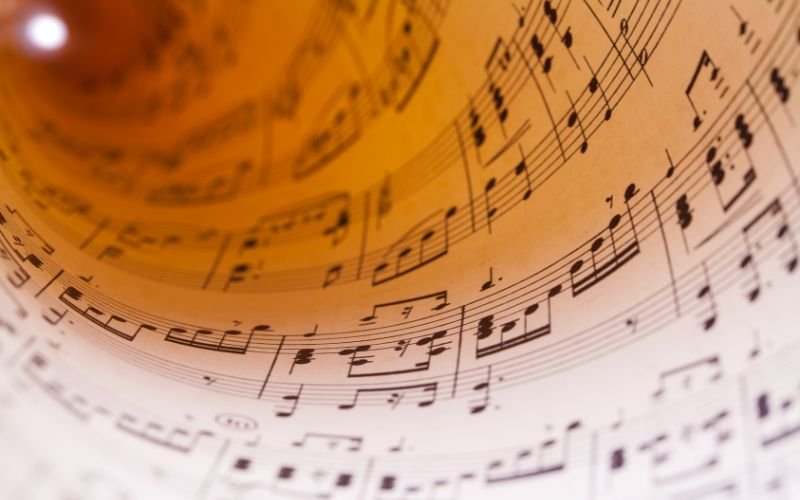Royalty-free works in 2024: scores to be consumed without moderation
Dear friends, music lovers, performers and creators, get ready to discover or rediscover the music that rocked the world 70 years ago. In 2024, a panel of musical scores finally enters the public domain and becomes accessible to all. It's time to renew your repertoire, explore, interpret and reinvent the classics! Discover or rediscover several masterpieces from the early XXᵉ century and give new life to melodies that have captivated generations. From the brilliance of classical music to the spellbinding rhythms of early American jazz, let these legendary scores inspire you.
Reminder: copyright, how does it work?
Copyright and authors' rights represent a cornerstone in the protection of intellectual works, providing creators with the legal framework they need to safeguard, protect and enhance their creations. This form of legal protection applies to a vast scale of original works, be they literary, artistic, musical or from any other creative field. The essence of copyright lies in the granting to authors of exclusive rights over their work, including reproduction, creation of derivative works, distribution, and public performance. These prerogatives enable authors not only to control the use of their work, but also to obtain fair and equitable remuneration.
The duration of this protection varies according to national legislation, but in France it generally extends up to 70 years after the death of the author. Once this period has elapsed, the work enters the public domain, which means it can be used without restriction, opening the door to the free circulation of knowledge and the creative use of historical works.
6 free sheet music in the public domain in 2024
First, "Mack the Knife", a landmark tune from Kurt Weill and Bertolt Brecht's "L'Opéra de quat'sous", becomes accessible. This classic, with its catchy melodies and incisive text, has spanned the decades, captivating global audiences and adapting to diverse musical styles.
Cole Porter's "Let's Do It (Let's Fall in Love)" is a perfect example of the spirit and elegance of the golden age of American songwriting. Porter's lyrical sophistication and timeless melodic compositions continue to inspire musicians and listeners alike.
The works of jazz pioneer Louis Armstrong are also entering the public domain, offering unprecedented access to some of his most influential songs. Armstrong, with his trumpet and unique voice, not only defined the sound of jazz, but also elevated the art of improvisation to new heights.
Standards such as "When You're Smiling", "Makin' Whoopee!" and "I Wanna Be Loved By You" - the latter immortalized by Marilyn Monroe in the film "Some Like It Hot" - testify to the richness and variety of American popular music of the era. These songs, with their catchy melodies and evocative lyrics , continue to resonate with new generations.
The influence of the blues is also brought to the fore with the entry into the public domain of early recordings by legends such as Bessie Smith and Ma Rainey. These singers, with their vocal power and expressiveness, played a crucial role in the evolution of the blues, a genre that has profoundly influenced modern music.
Finally, compositions by French guitarist Django Reinhardt join this prestigious list. Reinhardt, with his innovative playing style, made a significant contribution to gypsy jazz, stringing together virtuoso improvisations that continue to inspire musicians the world over.
How can you make the most of royalty-free works?
Using royalty-free works offers immense creative freedom, but it's important to proceed correctly to respect the spirit of the public domain while making the most of these resources. When a work enters the public domain, it means that you have the right to use it without asking permission from the author or his heirs, because exclusive copyright has expired.
You may reproduce these works, modify them, incorporate them into new works, share and distribute them, whether for personal, educational or commercial purposes. Musical compositions may be performed, recorded or rearranged as desired.
However, although use is free, it's a good idea to practice ethical and respectful use of works. This means properly crediting the original author, even if this is not a legal obligation, to recognize his or her creative contribution. What's more, even if the original work is copyright-free, new works created from it, which could be considered original, may be protected by copyright. It is therefore important to distinguish between works in the public domain and derivative creations, which may enjoy their own protection.
💡 Make sure the work is truly in the public domain before using it and avoid misunderstandings or potential copyright infringements. Copyrights differ from country to country.
How do I know if a score is royalty-free?
To determine whether a musical score is royalty-free and free of charge, there are several steps to follow and several factors to consider:
Check the author's date of death: the general rule is that works enter the public domain 70 years after the author's death. If the composer died more than 70 years ago, his works are probably free of copyright. However, this period may vary from country to country, so it's important to check local laws.
Consider the rights associated with specific arrangements: even if the original composition is in the public domain, certain arrangements or interpretations may be protected by copyright. A recent arrangement of a classical work, for example, may be protected even if the original work is not.
Search databases and archives: many sites and institutions, such as the Bibliothèque nationale de France's Gallica digital library, offer access to royalty-free works. They can provide information on the copyright status of a score.
Consult copyright notices: some scores may include copyright information that can help determine whether they are royalty-free. This information can be found on the score itself or on the website where it is published.
Seek expert help: if you are in any doubt about the status of a work, you can consult a copyright lawyer or an organization dedicated to copyright management. They can provide precise advice based on the specific details of the work and current legislation.
💡 Are you a passionate musician, a professional or even a composer? Customize, share and practice your music without limits with Newzik. Join our community and reinvent the classics. With Newzik, easily access royalty-free sheet music, store, view, annotate, share and work on your scores on a single platform, anywhere, anytime, from any device. Try Newzik free of charge today to explore royalty-free sheet music and revolutionize the way you practice music.

